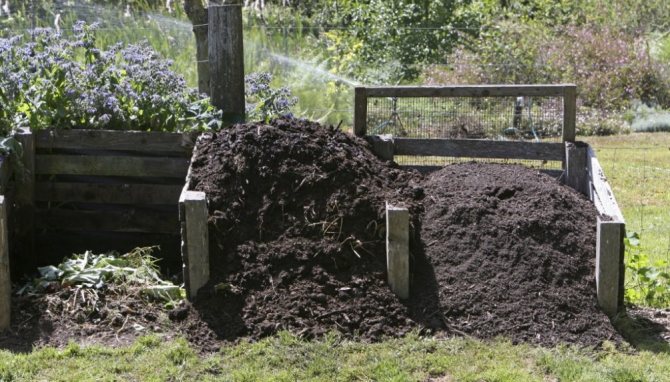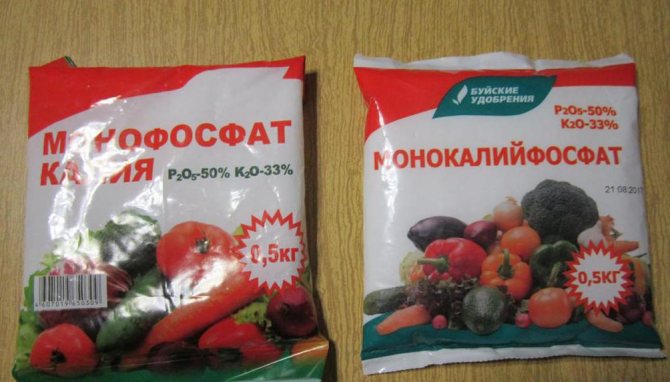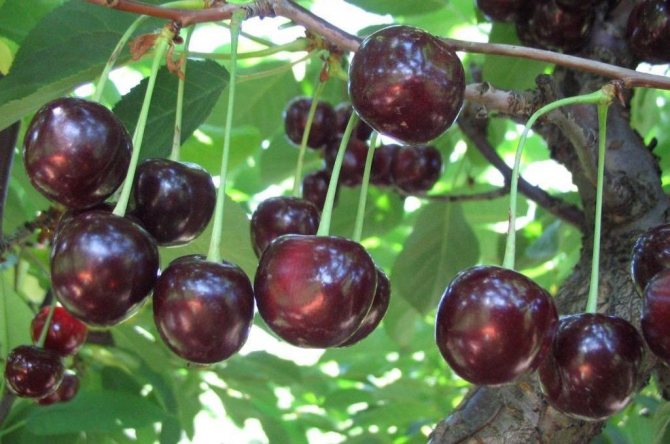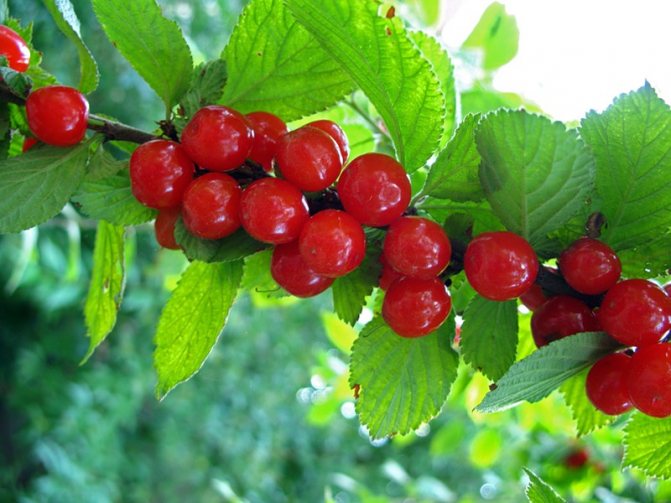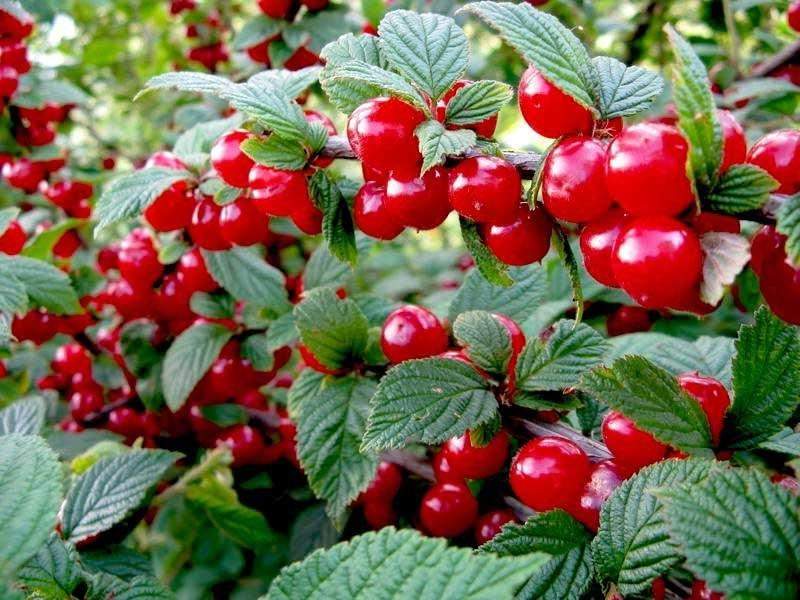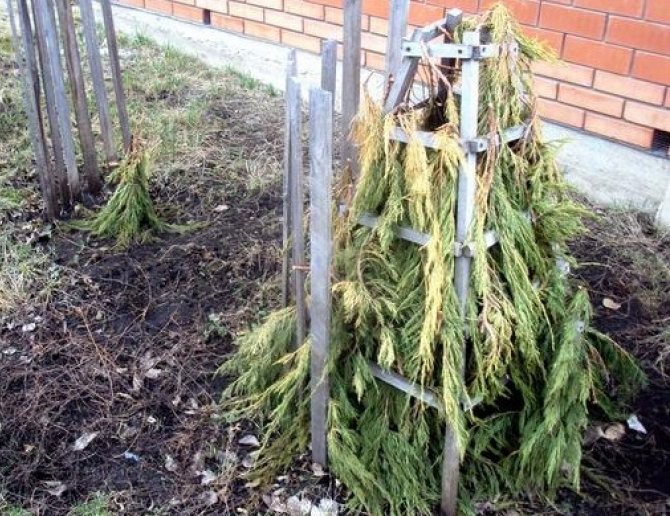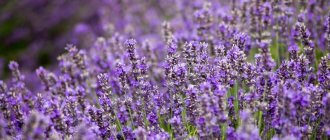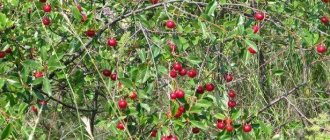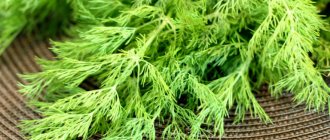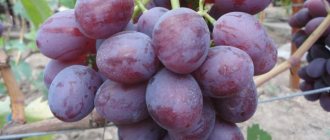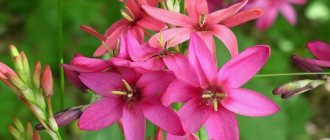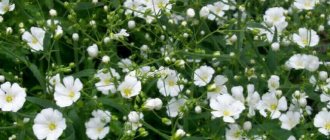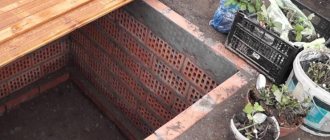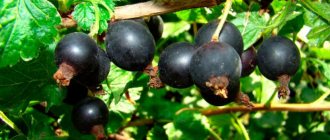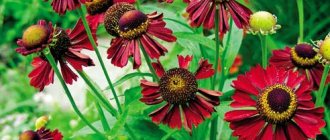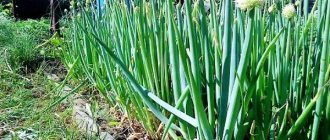Requirements for cherry varieties for the North-West
Unfavorable weather conditions, with which nature often abounds, become an obstacle for gardeners in growing some fruit crops. So that experiments and experiments with trees do not end in failure, you need to familiarize yourself with the rules for choosing varieties for the northern regions.
When choosing plants for the northwest of Russia, pay attention to winter hardiness. If the tree is intended for growing in a warm climate, even a comfortable and warm cover cannot save it from freezing. Even some winter-hardy varieties will have to be covered at first, severe frosts can harm seedlings that did not have time to take root. Another rule is to choose only self-pollinated crops.
Vladimirskaya
Despite the emergence of new varieties, with which breeders delight gardeners, Vladimirskaya cherry does not lose popularity. A distinctive feature of the tree is frost resistance. This is not enough to survive the spring frosts, if the winter is long, there is a risk of frosting of the flower buds, which will affect the yield.
Benefits of Vladimir cherry:
- resistance to disease (rarely affects rot);
- scab resistance;
- resistance to dry weather conditions;
- yield.
The buds begin to bloom in May, the first fruits ripen in July. Under favorable conditions and proper care, it is possible to get more than 5 kg of large fruits with small seeds.
The peculiarity of the plant is several trunks. It is recommended to be vaccinated, which will allow the crop to be grown as a single-barrel crop.
The age of this cherry variety is 4 decades, for the first time the culture was presented by breeders in the 70s of the last century. Differs in high frost resistance, which is important for cultivation in the Leningrad region.
A distinctive feature of the plant is its resistance to moniliosis, although coccomycosis easily affects even mature trees with good immunity. Rubinovaya rarely exceeds 2.5 m in height. The presence of a dense crown allows you not to worry about the yield.
Flowering begins in May, fruiting dates are from early August to autumn. The disadvantage of the variety is poor transportability. When the stalk is removed, the juice appears abundantly, which reduces the storage time; the fruits must be used for immediate processing.
One of the earliest varieties recommended for the Leningrad region. The buds do not freeze even in severe frosts, especially in mature trees. Cherry disease resistance is average, often the asterisk is affected by coccomycosis.
A tree grows in height up to 4 m. The crown is lush, with a lot of branches. Begins to bear fruit a few years after planting. You will need a pollinator, the tree does not belong to self-fertile crops. It is recommended to grow cherries nearby so you don't have to worry about pollination.
A distinctive feature of the fruit is a sweet taste, the separation of the seeds will not be difficult. Berries are perfectly transported, used in canning, freezing, baking.
A plant that perfectly tolerates winter frosts, summer drought. Does not require regular maintenance, even rare watering will not affect the yield. No pollinators are required - the tree is self-fertile.The disadvantage is low immunity, which will affect diseases, the variety is easily affected by diseases dangerous for cherries.
The first harvest is recommended in early August. The fruits are quite large, they tolerate long-term storage and transportation.
The problem may arise with freezing of flowers, the buds bloom early, often subsequent frosts destroy them completely. Grow only on light soils, nutrient-rich soils can affect yields.
Shpanka Shimskaya
The peculiarity of the plant is its high resistance to low temperatures. Even frost up to 35 degrees is capable of transferring the tree. Spring frosts are also not an obstacle to good fruiting. Gardeners will also like the unpretentiousness of the variety; there will be no special difficulties in growing. There is practically no need to fight diseases, the high immunity of Shpanki Shimskoy will protect against the most common cherry diseases.
The culture is tall, the tree can easily grow up to 6 meters. There is a small drawback, you will have to plant other varieties nearby, you will need pollinators.
The fruit weight exceeds 5 g, the shade of the berries is dark purple. Shpanka Shimskaya is of little use for commercial cultivation. The berries are poorly kept and are often damaged during transportation. Used in the preparation of preservation, freezing.
Amorel Nikiforova
A medium-sized (up to 3 m) spreading tree has many advantages - endurance, unpretentiousness, excellent frost resistance. Fruiting occurs 3-5 years after planting. If you take care of timely vaccination, it is possible to get a crop in just 2 years.
Flowering falls in the second half of May, fruiting in July. Cherries are small (rarely exceed 3 g). The variety is not suitable for growing for sale; when the stalk is removed, a lot of juice comes out, which affects the shelf life. It is recommended to carry out processing immediately after collection, even a short time is enough for the berries to start to deteriorate.
The bred variety was recommended only for cultivation in the middle lane, but the winter hardiness that is the hallmark of the Crimson Cherry soon attracted gardeners living in more severe conditions. The height of an adult tree does not strike, rarely exceeds 2 m. The disadvantages also include self-infertility, pollinators will be needed.
The main value of the plant is early harvest. The first fruits can be harvested at the end of June. The berries are quite large, but not transportable. Use the fruits for processing - jam, conservation, baking.
Dessert Volzhskaya
The variety is recommended for cultivation in the Leningrad region. High frost resistance, resistance to diseases, late flowering, which begins after the last frost, are the distinctive characteristics of Dessert Volzhskaya cherry.
The tree does not exceed 3 m in height, it requires planting by a number of pollinators. After grafting, fruiting begins in just 2 years. Dessert Volzhskaya will delight you with its yield, from one plant it turns out to collect 10-12 kg of juicy fruits. It is recommended to grow for sale, the stalks are easy to remove. Despite this, shedding does not occur, each berry must be picked.
This variety thrives in cold regions. Practically not afraid of frost, easily tolerates spring frosts. Fruiting occurs early, 2-3 years after planting in a permanent place. Fruits appear only on annual branches.
The fruits are small, even in favorable weather they do not exceed 2 g. This is the main reason for growing a plant only for processing in the kitchen, one cannot expect high yields for sale. The variety is prized for its taste, juicy sweet fruits are great for desserts and jams.
Prevention and treatment of diseases (coccomycosis, moniliosis)
A sharp drop in productivity and even the death of plantings in cherry orchards has been observed in recent decades, which is associated with the appearance of fungal diseases such as coccomycosis and moniliosis. One of the most contaminated areas is the Northwest Region.
Coccomycosis is a dangerous disease, the spread of which is facilitated by humid, warm to 20 - 24 ° C weather. Such an environment promotes the development and reproduction of the pathogen - the fungus Coccomyces hiemalis, which affects the garden culture.
Important! During flowering, the disease spreads extremely quickly.
In summer, rounded reddish-brown spots appear on the upper side of the leaves, increasing over time, they lead to drying out of these areas. On the reverse side of the leaf plates, areas with a pinkish tinge appear. The leaves turn yellow. In the second half of summer, the affected leaves die off and crumble, the branches remain bare. Because of this, the plants weaken and cannot prepare for wintering. By spring, some of the shoots die, damage appears on the trunk and main branches. The yield drops sharply, the quality of the cherries deteriorates. If you do not take action, the plant will die in a few years.
To combat coccomycosis, all plants are treated with Bordeaux liquid, ferrous sulfate solution, and fungicides. After 7 - 14 days, the treatment should be repeated.
The fungus hibernates on fallen leaves and shoots, so they should be collected and burned.
Cherry spraying is carried out in spring
For prevention, spraying is carried out in the spring: the first time - before the flower buds open, the second time - at the end of the flowering period.
A little later, coccomycosis, another dangerous disease of stone fruit crops appeared - moniliosis (monilial burn) caused by the fungus Moniliac inerea. This disease also affects other fruit crops. During flowering, the spores of the fungus penetrate through the pistils and pedicels into the wood tissue, germinating in it. Outwardly, branches, flowers and foliage seem to be burnt.
The second time, the plant becomes infected through the fruit: fungal spores mature in them. The berries look dry, mummified, becoming covered with a grayish bloom. They do not fall off, sagging until spring, and become a new focus of the disease.
Pay attention! The development of the disease is facilitated by wet weather in spring and summer, irregular pruning of trees, and failure to comply with agricultural practices. If you do not carry out prevention and treatment, cherries wither and disappear.
It is imperative to remove fallen leaves, and loosen the soil under the plantings. Cut off the affected branches, while capturing part of the healthy wood, and destroy them. The fruits remaining on the branches are subject to removal and burning.
Before the buds open, the trees are treated with Bordeaux liquid or fungicides. In the second half of the flowering period, the treatment is repeated. When detecting foci on healthy plants, systemic fungicides are used:
Destruction of the pathogen and the inadmissibility of the spread of infection to healthy plants are the main ways to combat fungal diseases.
For maximum effect, the treatment is carried out in calm dry weather in the morning or in the evening, when the possibility of sunburn is excluded.
These measures will help to collect rich harvests even in the cool climate of the Leningrad region.
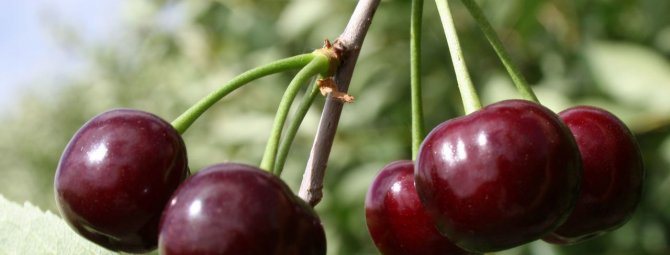
Among cherries, there are varieties that are referred to as the so-called self-fertile (self-pollinated). Among them there are trees of various heights, frost resistance. Some people prefer certain regions for growth. All this must be taken into account in order to achieve good results when growing cherries in the garden.
Features of planting and caring for cherries in the Leningrad region
Even novice gardeners will not have any particular difficulties when planting young cherries and subsequent care.Planting is best done in spring, sending the seedlings to open ground in autumn will be fatal for the plant, it will not survive the first severe frosts. Cherry prefers light soil. It is recommended to prepare the soil mixture yourself, for this mix:
- humus;
- river coarse sand;
- rotted compost (often replaced with peat);
- sod soil.
Take the components in equal parts, it is recommended to add wood ash (only 3-5 handfuls per plant). Be sure to complete the planting by laying out a layer of mulch (sawdust, chopped needles, bark, straw).
What varieties of cherries are best grown in the Leningrad region
Of course, cherry is still a thermophilic fruit crop, and therefore it is traditionally grown in the southern regions. But the centuries-old experience of our ancestors testifies to the fact that good harvests of juicy berries were obtained in the north-western regions of the country, known for a rather harsh climate. In order for cherries to grow in the Leningrad Region, varieties need to be selected for winter-hardy, zoned and recommended specifically for these climatic zones.
And it should be noted that today the choice is quite large, and along with old varieties, which, albeit good, but still vulnerable to diseases, new ones have been bred, distinguished by good winter hardiness and high yields.
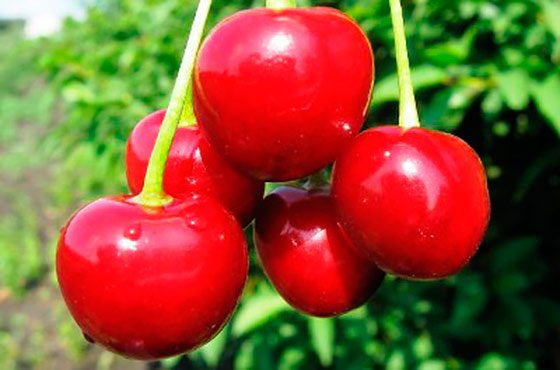

Cherry varieties for the Northwest
The Northwest Territory is the northernmost region where cherries can be grown. At the same time, the varieties that give excellent yields in the south are not suitable for the local climate.
The main requirements for the varieties that are planned to be cultivated in these areas:
- Good winter hardiness (the ability of cherries to withstand all winter "troubles" in the form of sharp fluctuations in temperature, prolonged thaws, sudden cold weather).
- Frost resistance (the ability of a plant to endure a decrease in temperature, being in periods of deep and forced dormancy).
In addition, cherries must be resistant to coccomycosis and moniliosis and, of course, differ in yield.
Another important point: cherry is a cross-pollinated crop, therefore, in order to wait for the berries, several different varieties must be planted in the garden.
According to the classification, there are self-fertile and partially self-fertile varieties, that is, they do not need pollinators to be transplanted to them. But again, based on experience, even self-fertile varieties will have higher yields if a pollinator cherry grows nearby. Therefore, this fact should not be neglected, it is better to choose several varieties for the garden, preferably with a similar flowering time.
Why the felted cherry from the Far East doesn't like northern clay
I was carried away by the felt cherry. She grew up well with many of the neighbors. The taste of Odessa sweet cherry was different - there was a lack of sourness and aroma, but in the north any berry is tasty and desirable, so our family fell in love with felt cherries.
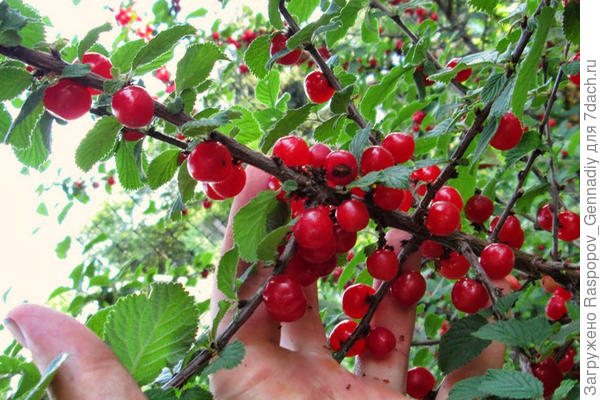

But in the first garden on clay in the lowland, felt cherry grew for 3-4 years, and after the first bountiful harvest it froze and melted away. I did not immediately find out all her secrets.
This plant comes from Asia. Now she is still loved in China, Mongolia, Korea. I have tried the unusual marmalade made from this cherry, which is made by Koreans. On the one hand, it is a kind of cherry, but belongs to the genus of plums. Modern varieties differ little from their wild ancestors, in agricultural technology they are less capricious than varietal plums. But it is self-fertile, loves many varietal plantings and pollinator insects. Russian mice and hares do not eat it, they are used to young apple trees.
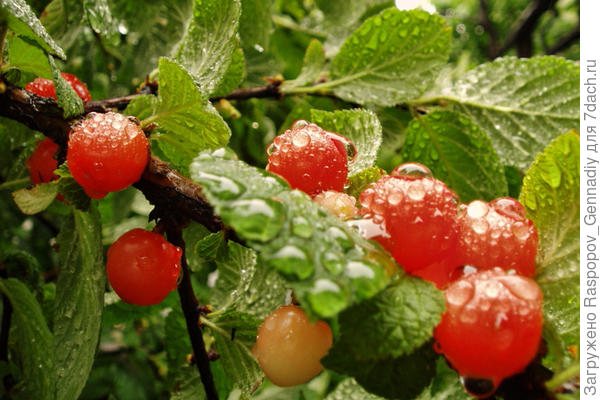

In our new garden on the sand, with plenty of organic matter, unlike cold clay, felt cherry bushes grew quickly, did not get sick, delighted in favorable frost-free winters and springs with an abundance of beautiful flowers and sweet tasty berries.
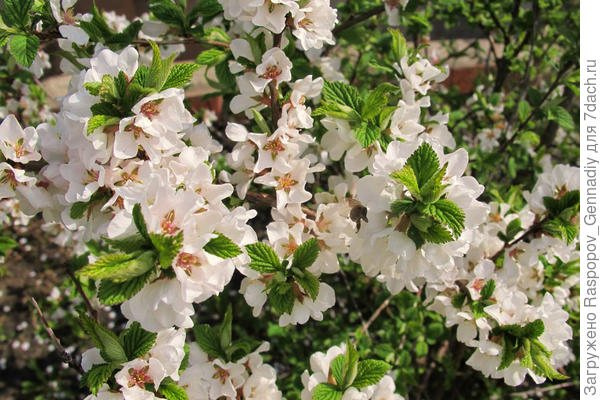

What varieties of cherries are best for the Leningrad region
In the gardens of residents of the Leningrad, Pskov, Novgorod regions, cherry is one of the most popular crops. Of course, you have to work hard to get the harvest, but all the troubles are compensated for when collecting delicious berries.
The list of varieties that are recommended for planting in these regions includes the following:
The listed varieties of medium ripening are quite common and have been grown for a long time.
From the early varieties, we note the Shpanku Shimskaya cherry and the variety with the original name Amorel Nikiforova. The famous Lyubskaya, like Zhukovskaya, are already later varieties that have proven themselves well, but are still more in demand in the central regions.
Of the newer varieties, we single out Raduga, Zarnitsa, Dessert Volzhskaya and Scarlet, which are distinguished by improved properties. And now we will tell you a little more about some varieties.
Variety Lyubskaya
One of the varieties traditionally grown in the gardens of the Northwest is self-fertile, high-yielding. In the photo at the beginning of the article, it is the Lyubskaya cherry variety that is presented.
The advantages also include the good taste of the fruit, the high content of vitamins in them, as well as the good transportability of ripe berries.
But in terms of frost resistance and susceptibility to diseases, this variety loses to some others, and gardeners of the Leningrad region have to work hard to get a crop.
This cherry needs good fertile soil, a lighted place. But the variety is not so picky about moisture, it is drought-resistant. Early flowering, and this must be taken into account in order to protect the cherry in the event of recurrent frost. The berries are bright red in color and begin to ripen around the end of July. With good care, up to 20 kg of excellent fruits can be removed from one Lyubskaya tree.
Shpanka Shimskaya
Cherry with such a colorful name was bred in the Shimsky district of the Novgorod region, therefore the variety is adapted for the conditions of the North-West.
Differs in good yield, perfectly tolerates critical drops in temperature (even up to minus 30-35 degrees), long winter. We need pollinators, and in this capacity the best cherry varieties will be Vladimirskaya or Amorel Nikiforova. Saplings begin to bear fruit around the third or fourth year, early fruiting. The pulp is slightly sour and has a light pleasant aroma.
Amorel Nikiforova
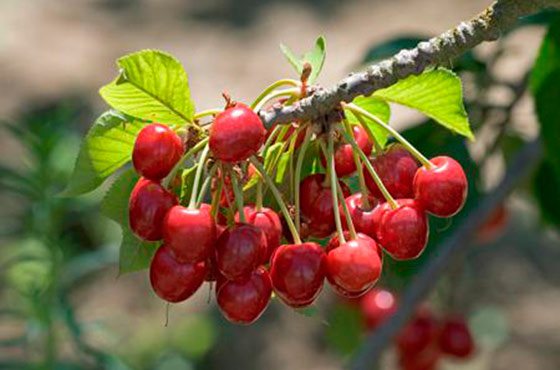

The low-growing variety is zoned for the regions of the North-West, reaches a height of about two and a half meters. In the description, it should be noted that this is a winter-hardy, fruitful variety. It belongs to the early varieties, already from the second half of July in the Leningrad Region, ripe fruits begin to be picked. The berries are red, with a very delicate pulp, with yellow veins.
May be affected by coccomycosis. Gardeners love this variety for its early fruiting.
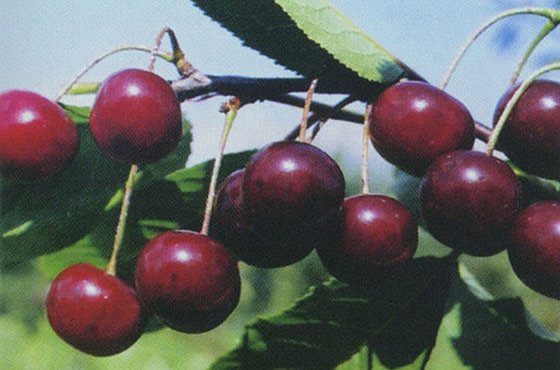

It is a bushy cherry characterized by high winter hardiness. The average ripening period of berries, in the conditions of the North-West, gives good yields.
It is a partially self-fertile cherry, but it is recommended to plant pollinators next to it to increase yields. The berries have a very pleasant refreshing taste and have a dense, dark red flesh.
Dessert Volga
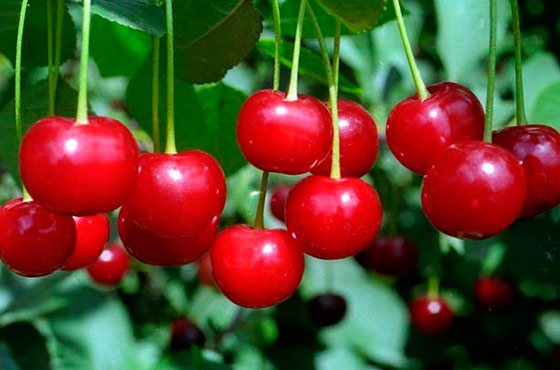

The variety Dessertnaya Volzhskaya is distinguished by excellent winter hardiness of both wood and flower buds. The height of the tree is up to three meters, the crown is slightly thickened.
Medium early variety, yields are good, but despite the fact that the variety is self-fertile, pollinators are needed. The best option is Vladimirskaya cherry. With proper care on grafted seedlings, the first berries can be already in the second year, they enter the full fruiting phase at 4-5 years.
This cherry variety is recommended for the North-West, as it is winter-hardy. But in very frosty winters, flower buds can freeze.
The tree is tall, has a dense crown. The fruits begin to ripen in early August. Berries with a thin skin, dark red, tasty.
Very tasty jam is obtained from the fruits of Zarnitsa
When to plant cherries
Spring planting is practiced in Siberian regions with a sharply continental climate - short summers and severe long winters. In the middle zone, where the climate is temperate, more humid and warmer, cherry seedlings are planted in autumn - in September-October.
This period is considered the most optimal, since the task of the gardener is to enable the seedling to take root well and go into the winter before the beginning of the growing season (growth and development). If the autumn planting date is missed, then you have to wait for spring. For this period, seedlings are buried in a shallow trench with a slope of 45 degrees before the onset of warm days.
Advantages of autumn planting of cherries in the middle lane:
- During this period, there is no need for frequent watering, since it rains quite enough.
- The seedlings are sold fresh, recently dug up. They have still preserved not dried young roots and leaves, which can be used to determine the condition of the seedling, the presence or absence of infections.
- Large selection and relative cheapness.
And finally, in the fall, the gardener has more free time than in the spring.
Vladimirskaya
An old and popular variety. Frost-resistant, but freezing of flower buds is possible, especially during frosts in spring. Benefits: Resistant to dry, hot weather, rot, infections and scab (especially important in wet climates).
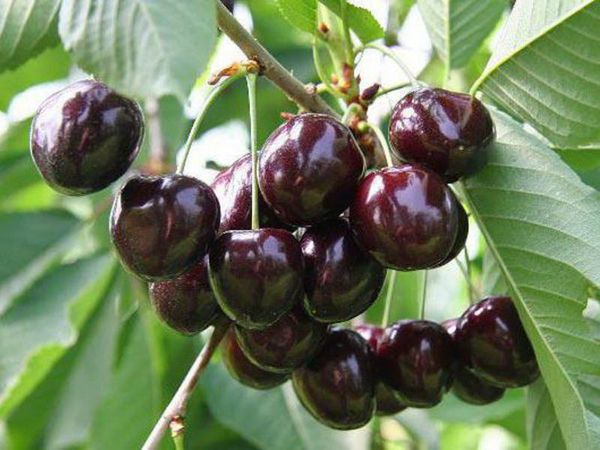

The first crop can be harvested 4–5 years after planting the seedling. Self-infertile, suitable pollinating neighbors - Lyubskaya, Shubinka, Turgenevka.
The plant is bushy, multi-stemmed, 3-5 m, but grafted grows as a single-stemmed plant. Spherical, slightly weeping crown. The buds bloom in early May. Harvesting begins after mid-July. On annual shoots 80–85% of fruits are formed. In the Leningrad Region, you can get about 5 kg of berries per tree per year.
Shpanka Shimskaya
Belongs to the best cherry varieties for the Leningrad region. It can withstand frost down to -35 ° C, long winters and frosts in spring. Quite a strong immunity to coccomycosis, with a high yield. Planting and leaving is not particularly difficult; in terms of endurance, it resembles a felt cherry.
The variety is high, up to 6 m in height. The crown is spherical, of medium density. Refers to tree species.
The first harvest gives 3-4 years of cultivation. Self-infertile, to get a good harvest, you can plant Amorel Nikiforov or Vladimirskaya nearby. Lives up to 25 years.
Gardeners appreciate this variety for its large (5–6 g) berries, their pleasant aroma and refreshing acidity. The skin is purple, the flesh is yellow in contrast, the juice is transparent. For commercial breeding, the variety is not very suitable due to the low rates of transportability and keeping quality, but in private farms the fruits are used both fresh and for baking, conservation and even winemaking.
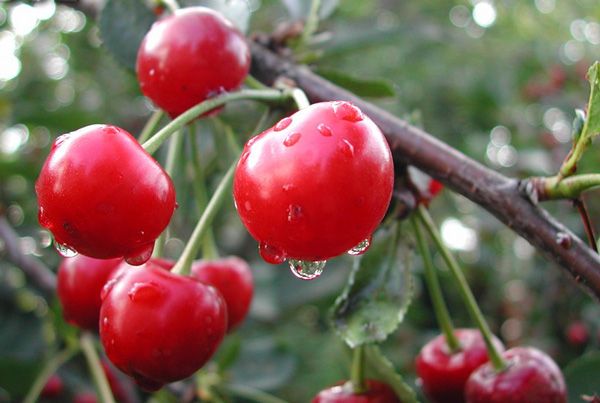

Lyubskaya
It is resistant to cold, like other varieties suitable for the Leningrad region. Does not require abundant watering, withstands drought. Excellent self-fertile characteristics allow large yields to be harvested even without pollinators nearby. Weak immunity to fungus.
For the first time bears fruit at 2-3 years of age. Maturation occurs in early August.
Berries up to 4 g, tasty, rich burgundy color. Scarlet juice. Due to its transportability, the variety is suitable for commercial cultivation.
The early flowering inherent in the variety can be a problem: if return frosts occur in the spring, this affects the harvest. Cherry planting is recommended on light or medium loamy soils.
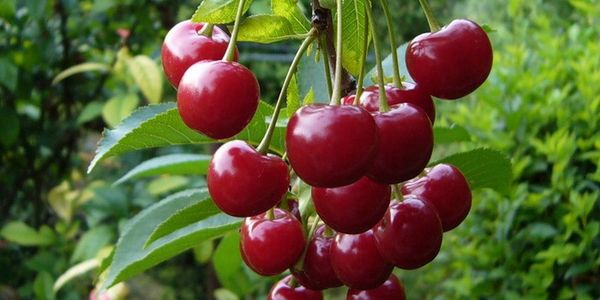

Amorel Nikiforova
This frost-resistant and fruitful cherry was zoned for the Leningrad region in 1959.
The variety is medium-sized, 2.5–3 m. In mature trees, it becomes rather spreading. Own-rooted plants give a harvest 3-4 years after planting, grafted plants - at 2-3 years of age.The variety is partially self-fertile, suitable pollinators Shubinka and Shpanka Shimskaya. Flowers bloom at the end of May. You can start harvesting towards the end of July.
Cherries are medium in size - 2.5-3 g, tender. The pulp looks interesting: red with yellow veins. The juice is clear. Detachment from the stalk occurs with the release of sap, therefore commercial breeding is not recommended. Usually fruits are eaten fresh, they are of little use for conservation or storage.
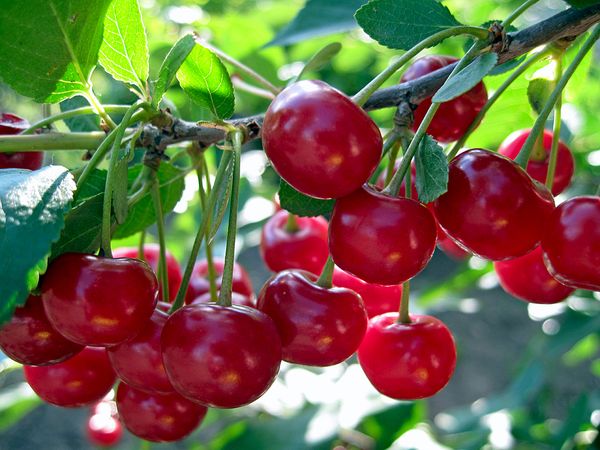

Although the variety is zoned mainly for the central region, due to its good winter hardiness, this cherry can often be seen in the gardens of the Leningrad region.
The description of the variety is as follows: bushy variety up to 2 m, self-fertile. Good pollinators: Griot Moscow, Shubinka, Pink bottle. It is also appreciated for its early ripeness: the berries ripen in the first half of July. Fruits are large, dark red, weighing 3.5–3.7 g, with a refreshing, pleasant taste.
Ruby
Zoned in the north-western region since 1974. Frost-resistant. It can be affected by coccomycosis, but it has good immunity to moniliosis.
The height of the tree is up to 2.5 m, its crown is dense, spreading and wide. The variety is self-fertile, Vladimirskaya and Otechestvennaya serve as good pollinators.
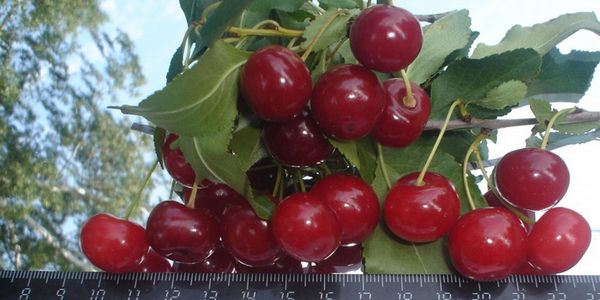

Medium-late variety: buds open at the end of May. The technical ripeness of the fruit begins in early August. Up to 40% of berries are tied on one-year shoots, 60% on two- or three-year-olds.
Juicy and tender berries weigh 3.5-4 g. They contain more acids than sugars. Flesh with a yellowish tinge. It is easy to separate the stone, but the stalk comes off with the release of juice, so the transportability of the variety is low. The juice is clear.
Dessert Volga
Cherries of the Dessertnaya Volzhskaya variety are valued for their good winter hardiness: like felt cherries, they are suitable for growing in cold climates.
A tree up to 3 m with a slightly thickened crown. Partially self-fertile, for pollination they plant Vladimirskaya, Rastunya, Finaevskaya nearby. Grafted trees bear fruit from 2-3 years, self-rooted - from 3-4. It is very fruitful: proper cherry care will bring up to 12 kg of berries from an adult plant.
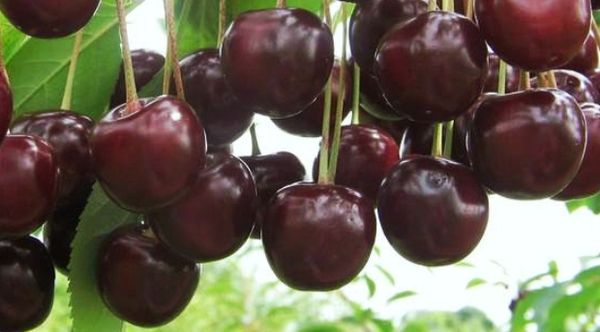

Berries weighing 3.2 g, glossy, burgundy, ripen in mid-July. The pulp is pinkish-red and juicy. The juice is red. The berries are easily removed from the stalk, but they themselves hardly crumble.
Recommended for cold regions. Frost resistance at the level of felt cherry. Fruiting begins 2-3 years after planting. Fruits are formed mainly on annual shoots. The harvest ripens in early August.
The berries are small - about 2 g. The skin and pulp are dark red. Average density, harmonious taste, sweet and sour. The stone is medium. The peduncle is weakly attached. Used fresh and for preservation, these cherries make delicious jam.
Star
Early ripe fruitful cherry for the Leningrad region. Cold resistance similar to felt cherry, generative buds are able to withstand significant cold. The immunity to the defeat of coccomycosis is average.
The variety is high, the crown is in the form of a pyramid. Begins to bear fruit on average in the 3rd year of life. Partially self-fertile, but in order to achieve a large yield, pollinators are needed - Wreath or Seedling No. 1. The variety responds very well to cherry pollination. Most of the berries are formed on last year's growths. The berries ripen at the beginning of July.
Cherries weigh up to 4 g, which are distinguished by bright red skin, light pink juice and pulp. The taste is delicate, refreshing, sweet and sour. The bones are easily separated.
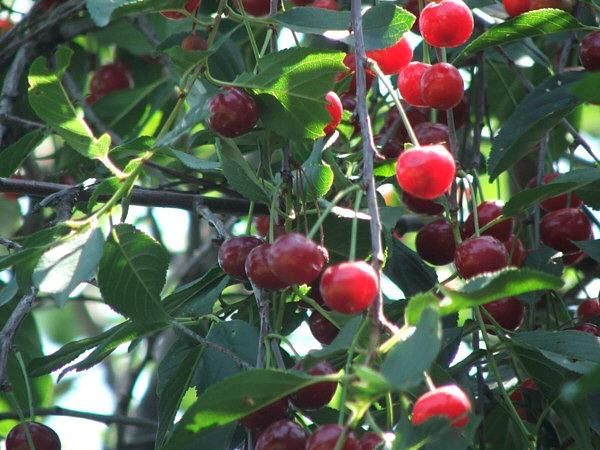

Cherry for the Leningrad Region: the best varieties
The weather in the Leningrad region is uncomfortable for growing an initially southern crop. But of the 140 varieties that exist today, you can find suitable cherry varieties for the Northwest region.
They must be selected taking into account unstable climatic conditions.
Important! The priority is zoned varieties adapted for growth in difficult weather conditions.
Cultivars must have good winter hardiness in order to withstand sufficiently low temperatures in winter and not suffer from spring frosts. Be self-pollinating to avoid dependence on the presence of pollinating insects.
The best cherry varieties for the Leningrad region
The shape of the tree is of great importance: tree-like or bush. Tall trees will not be covered by any snowdrift: flower buds, left without shelter, will freeze, which will significantly reduce the yield. A bushy form of the plant, described as compact and short, is preferred. Such a plant will be completely covered with snow in winter and will not suffer from frost.
To make the tree grow
The best time to plant in this region is spring, before the buds open. It is imperative to choose a well-lit place, this is a prerequisite. In addition, in order to be able to count on a good result, it is necessary to choose neutral or, in extreme cases, slightly acidic soils. If acidic, peaty areas predominate on your site, then you need to prepare well for planting.
To do this, dig a large hole and fill it with a purchased earthen mixture. A young cherry is planted in the middle of this hole. Do not forget that it is necessary to choose only self-pollinated cherry varieties for the Leningrad region. In addition, in order for your plantings to safely endure the cold, varieties should be taken only with excellent winter hardiness.
Care advice
Based on the practice of experienced gardeners, the following recommendations can be distinguished:
- after planting a seedling, do not fertilize the soil for 2 years, but only loosen the ground, water in dry weather and weed out weeds;
- at the beginning of autumn, under the cherries, it is necessary to carefully dig up the soil and carry out water-charging irrigation to prepare for winter;
- be sure to mulch the soil in the trunk circle to retain moisture;
- watered fruit-bearing trees abundantly during the growing season, flowering and at the time of fruit ripening;
- liming the soil every five years to keep the acidity at a low level;
- periodically (during the growing season and when digging in the fall), apply the necessary mineral and organic fertilizers;
- in the spring, before bud break, cut off damaged, weak and diseased branches;
- constantly cut out the emerging root shoots;
It is imperative to rejuvenate plants after (7-8) years by cutting out old branches
It is imperative to rejuvenate plants after (7-8) years by cutting out old branches, replacing them with strong root shoots. This will extend the life of the tree.
How to choose and plant cherries correctly
Before purchasing, you need to decide in advance whether it will be a rooted plant or on a rootstock. If the second option, then when buying, you need to find a vaccination site - it has a pronounced thickening just above the root collar.
In addition, the tree should have a main guide, which will later become the main trunk, and pruning will be done with an eye on it. If there is no central conductor, then you will get a highly branched plant with a high risk of breaking the crown during the fruiting period.
Immediately before planting, the plant is examined again to identify any flaws and:
- remove "soaked" roots;
- trim very long root ends;
- cut off those roots that do not fit in the planting pit;
- tear off the remaining foliage.
In no case should you cut branches, only if they broke during transportation.
In the presence of dried roots, before planting, they are placed in water for several hours (from 2 to 10) to be saturated with moisture.
When the seedlings are sorted out, you need to determine a favorable place for planting cherries. This should be a well-lit area, protected from the north wind.
Best of all, she "feels" on loam, sandy loam with good aeration.
The planting site is carefully dug up with the removal of weeds, leveled with a rake. Planting pits are planned at a distance of 4-5 meters from each other. Their diameter and depth is 80-90 cm.When the cherry orchard is outlined and the pits are ready, they add:
- humus - 3 buckets;
- ash - 1 l;
- superphosphate - 0.2 kg;
- potash fertilizers - 0.1 kg.
In addition, with clay soil, a bucket of sand is poured into the pit, with sandy soil - a bucket of clay. Mix everything with a shovel and form a small mound in the center for convenient placement of the roots.
You can start planting. First, a support peg is stuck into the hole, then the seedling is placed strictly vertically and the roots are carefully straightened along the slopes of the mound. It is necessary to ensure that the root collar and the place of the scion (if any) are 3 cm above the ground surface. The roots are sprinkled with soil, periodically shaking the tree. When the process is half completed, a bucket of water is poured into the pit and the planting is completed. The earth around is thoroughly rammed.
Then, they tie the plant to a support and, stepping back from the trunk 30 cm around the circumference, make a small depression into which another bucket of water is poured. It is advisable to mulch the planting site with rotted sawdust or compost. If after a few days the soil settles, then it should be poured to the general level.

